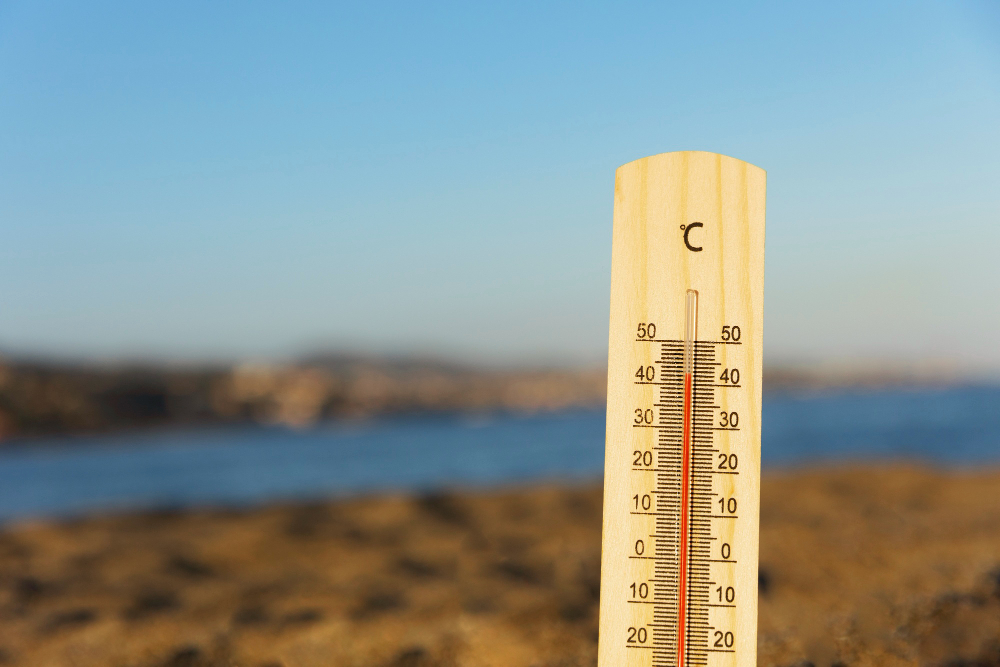Our climate measurement and tracking solutions enables businesses to achieve their climate ambitions using a comprehensive 5 step strategy.

Understand your environmental footprint and climate risks and set your foundation for climate action.
Find out moreSet ambitious targets, along with the strategies and roadmaps needed to meet them and drive global change.
Find out moreIdentify renewable opportunities, decarbonise your supply chain and drive sustainable transformation with best-in-class solutions.
Find out moreAccelerate climate action and invest in high-integrity climate action projects from around the world
Find out moreInspire future change and engage key stakeholders in your sustainability vision and communicate your results effectively.
Find out moreEasily measure and understand your current GHG footprint through a personalised, interactive dashboard and prepare for mandatory reporting requirements.

By measuring your footprint with our Fast Footprint solution, you can easily:

Benefit from simple data collection and submission methods by learning techniques from our carbon footprinting experts.

Get a full picture of your emission performance across scope 1, 2 and 3, aligned with the latest emission data.

Receive straightforward and accessible results, ready for compliance reporting and sharing with your wider organisation and stakeholders.
Biodiversity and ecosystem services are critical to ensure human well-being, maintain and improve production systems, increase resilience to climate change, and add value to businesses both large and small. All life and economies depend on healthy ecosystems, what is your biodiversity strategy?
Biodiversity plays a vital role for all life on our planet and relies on a fine balance between earth's natural ecosystems. The health of these ecosystems is critical to ensure human well-being, maintain and improve production systems, increase resilience to climate change, and add value to businesses, both large and small.
Investing in nature is key for the future of our planet and of your business. By understanding your operations' impact on biodiversity and the business risks associated with biodiversity loss, you can help tackle climate change while reaching your environmental objectives.
At Shared Value Hub, we support companies, governments and individuals to understand the impact of their operations on biodiversity and learn about their dependencies on biodiversity. Subsequently, together with our clients, we build a path that enables them to reduce their environmental impact and build a positive relationship with nature.
Understand the impacts your company has on biodiversity and understand how your company depends on biodiversity.
Define your company's ambition and develop quantified roadmaps to get there and define your company's strategy to manage risks from changing ecosystems.
Discover and implement strategies to improve impacts on biodiversity and to manage dependencies on biodiversity.
Compensate for biodiversity impacts that can not be avoided or reduced and invest in the integrity of ecosystems surrounding the company’s value chain.
From farm to fork, climate change is threatening how we farm. Prepare yourself and discover how your company can be part of a sustainable and resilient food system that is both good for the planet and your business.
Moreover, consumers and investors are starting to take a closer look at what companies like yours are doing to address climate change, mitigate risks and prepare for the future. With complicated supply chains running through multiple countries, it can be challenging to navigate regional reporting requirements, whilst setting and achieving environmental and financial business objectives.
Change starts with understanding. By understanding your current environmental performance, you can set the foundation for further climate action. This newly gained knowledge can help you identify the most impactful activities, including setting SBTs and Net Zero targets, that will increase resilience and boost productivity and profitability at the same time. Having a clear pathway will demonstrate that you are taking climate change and the future of your business seriously.
Each climate journey is unique and requires a tailored approach that is technically possible and financially feasible. Our team of agricultural experts can work with you in the following areas:
Measuring your impact by calculating greenhouse gas (GHG) emissions associated with Forest, Land, and Agriculture
Setting near-term and long-term climate reduction FLAG targets (SBTis)
Defining your roadmap to reduce and remove GHG emissions
Putting your pledge into action and reducing and/or removing GHG emissions in your value chain (Insetting)
Supporting the monitoring, verifying and reporting of your climate and nature performance
We support organizations in optimizing their Circular Economy ambitions by taking into account product & process functionality, regional infrastructure & legislation, and international trade-offs with other sustainability topics.
Taking into account the complexities of circular economy transitions, we are always happy to join an organization's efforts at any moment of the journey. We offer clearly scoped services, while it's our international and interdisciplinary team's intention to contribute at multiple stages of our customers efforts in plastics and circular economy.

Leveraging 15 years of experience in sustainability advisory and as co-author of the 3RI Corporate Accounting Guidelines, we are delighted to introduce the following services to help companies transition towards a circular economy for plastics and packaging.
Plastic credits are measurable, verifiable, and transferable units representing a specific quantity of plastic that has been collected from the environment, or recycled.
The Plastic Action Fund is currently under development by Shared Value Hub and will serve as a platform for organizations to collectively finance plastic waste collection and recycling infrastructure. The Plastic Action Fund will provide upfront financing for plastic waste reduction projects in regionals where access to financing is hard to come by. The Fund will allow for the development of a customised portfolio of projects based on preferences for geographical and project type, to complement efforts by companies within their own value chains.
Shared Value Hub's experience in environmental markets and as a trusted sustainability actor makes us the ideal partner to help companies on their plastics leadership journey.
Talk to us today to get started on your plastics footprint reduction journey!
Set credible science-based targets and develop a roadmap that maps the actions that enable you to effectively address climate change and mitigate climate risks.

Receive guidance in the target setting, SBTi's submission and validation process.

Develop an emission reduction roadmap that combines best-practice reduction interventions with key existing and planned interventions of your company.

Receive clear and concise outputs enabling you to easily feed in to your reporting for the most reputable reporting initiatives.
By doing so, you are:
While committing to a credible climate target is an essential part of any decarbonization journey, it’s the achievement of that target that truly matters in mitigating the worst effects of climate change.
Navigating your organization’s climate action journey can be overwhelming. Each day presents complex choices as you strive to achieve your climate target while also balancing other business goals. Shared Value Hub can help you build an emissions reduction roadmap based on scientific modeling that takes the guesswork out and instills confidence in decision making.
Implement emission reduction activities that immediately contribute to your climate targets.
We're here to help you identify and kick-start those activities that will help you immediately reduce your carbon emissions and set you up for success by designing for circularity. Following a comprehensive study, we suggest immediate reduction activities, using the latest methodologies, to create quick positive impact.
We analyse your entire supply chain from the ground up and identify and prioritise the emission sources causing big problems.
The annual supply of carbon credits is expected to increase five-fold by 2030 relative to 2020, reaching 1 billion tonnes of CO2 equivalent.
Purchasing carbon offsets allows companies or individuals to balance their emissions by funding projects making a positive climate impact. Rigorous third-party verification of these projects ensures that their impact is real, additional, and permanent.
They are a useful tool for those who need to offset their emissions CO₂ and for those who wish to achieve carbon neutrality . This is a unit of measurement certified by relevant bodies: specifically, one carbon credit is equivalent to one tonne of CO₂ that has been saved in emissions or captured, thanks in our case, to reforestation projects or the protection of endangered native forests.
Shared Value Hub makes these credits available to companies around the world to contribute to the Sustainable Development Goals and to mitigating the effects of climate change.
By relying on Carbon Credits Consulting, your company too can:
We directly oversee the entire value chain of each project, from its origination and initial financing to the execution of its environmental and social benefits.
We communicate your climate actions, to help you inspire, share impact, be transparent, and highlight the changes you're making.
To achieve great communication, we provide guidance with credible and authentic claims, which means avoiding false statements and greenwashing. We also help you to prepare impact narratives that you can share internally and externally, providing tailored key messaging, and frequently asked questions. These questions will be tailored for different events and purposes, but will support your journey as a whole.
We'll also work with you to arrange site-visits to our global projects, narrative strategies, and knowledge-building workshops with our partners.
And, of course, we'll provide you with thought-leadership support: that means op-eds, media support and materials, and blogs as necessary.